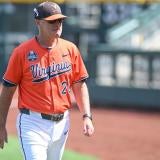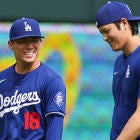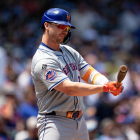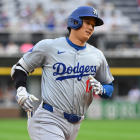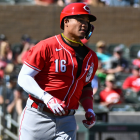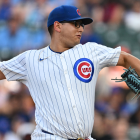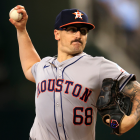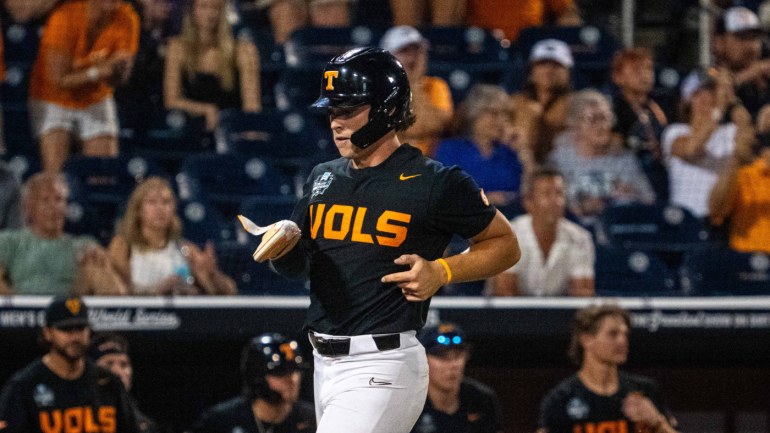
Major League Baseball's amateur draft will kick off on Sunday, July 14, coinciding with the beginning of the All-Star Game festivities. The Cleveland Guardians will make the No. 1 selection for the first time in franchise history. The Guardians have previously chosen No. 2 on five different occasions, including most recently in 1992, when they selected right-hander Paul Shuey from the University of North Carolina.
CBS Sports has spent the summer breaking down the draft class in a variety of ways, including recently ranking this year's top 30 players. As part of that process, we like to highlight a handful of players whose stocks are on the rise, as well as a handful of players we consider to be on the fall.
With that in mind, below you'll find five players who we're lower on than we were entering the season. Do note that inclusion in this piece doesn't mean these players are bad or that they'll even necessarily slip outside of the first round; it just means what we stated above -- that we're lower on the players now than we were in February.
Now, let's get to the good stuff.
1. Billy Amick, 3B, Tennessee
Amick was a key member of the vaunted 50-win Volunteers lineup. He did his part, hitting .310/.394/.667 with 21 home runs during the regular season. That performance gained him enough first-round hype during the regular season that we think there's a good chance he's going in the top 30 picks (perhaps even somewhere in the teens). So, why is he here? Our main reservation stems from his approach. He struck out 18 more times than he walked in 24 SEC games. Loop in his performance against ACC foes in 2023, when he was at Clemson, and he's sporting something like a 4-to-1 strikeout-to-walk ratio against the best competition he's faced. That's not the most promising statistic. Considering that there's a distinct possibility that Amick might have to shift across the diamond to first base, we just didn't feel good enough about his bat to rank him.
2. Caleb Bonemer, SS, Okemas (MI) HS
Bonemer seemed like a breakout prospect heading into the spring. He combined a fast bat and above-average strength with a good chance of remaining on the left side of the infield. He didn't take that expected step forward this spring, however, which makes it unlikely he goes in the first round. Should Bonemer suffer the same fate that Eric Bitonti did last summer, slipping to the third round, he would seem like a candidate to instead honor his commitment to Virginia.
3. Josh Hartle, LHP, Wake Forest
Although Hartle was viewed as a potential No. 4 starting pitcher coming into the year, one scout identified him as the one they'd most want on the mound if they had to win a game. Hartle didn't reward that confidence, instead posting a 5.79 ERA and having both his strikeout and walk rates move in the wrong direction. He was particularly bad during conference play, posting a 7.29 ERA and a .946 OPS when facing ACC foes. Factor in how Hartle was already perceived as having a lowish ceiling, and there was simply no way we could justify including him in the top 30.
4. Mike Sirota, OF, Northeastern
Sirota entered the spring hoping to follow in Chase DeLauter's footprints as a small-school outfielder who hit enough to earn a first-round selection. Alas, he scuffled during the toughest part of Northeastern's schedule, a worrisome development for scouts hoping to see him perform well against the closest he could get to professional-level competition. Sirota did finish in stronger fashion, but he still saw his OPS decline by more than 160 points on a year-to-year basis. That combination was enough to cost Sirota a spot in the top 30.
5. Tommy White, 3B/1B, Louisiana State
We appreciate a lot about White's game: his strength; his feel for contact; and, yes, the "Tommy Tanks" moniker. It wouldn't shock us if he finds himself coming off the board somewhere between Nos. 15 and 30. Still, we have some quibbles with his profile, similar to those we have with Amick. White is probably not a third baseman in the majors, and that leaves him as a right-right first baseman. We'll admit we're biased against that profile in the first round; the offensive bar is so high, and with it so is the attrition rate. That's where our other main concern comes into play: his approach. White really likes to swing the bat, which explains how someone who averaged 25 home runs per season failed to walk in more than 9% of his plate appearances in any given year. It's hard to find much precedent for that statistical achievement. As such, we have more reservations about his bat at the next level than we thought we would entering the spring.




